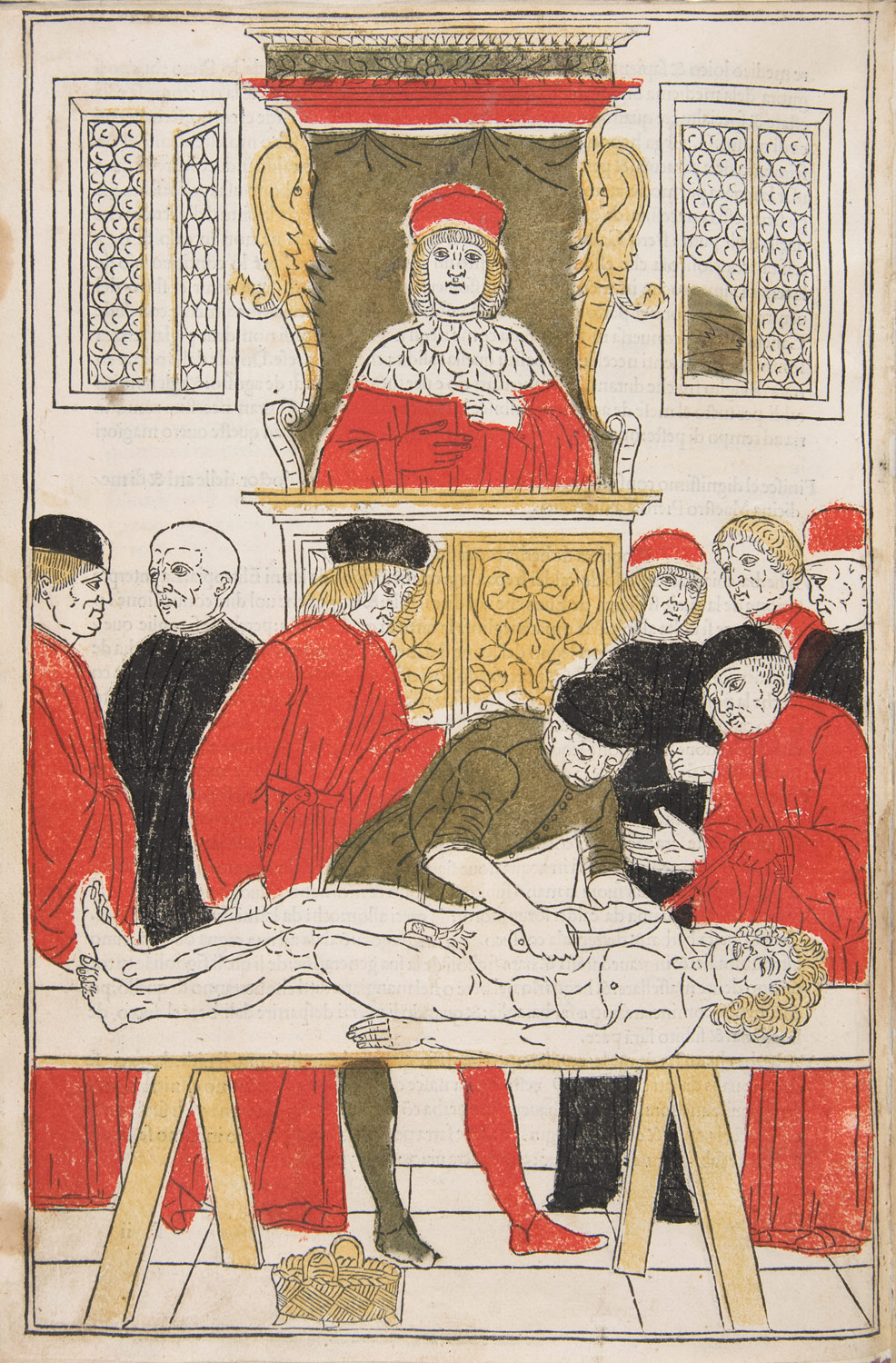Fascicolo di medicina
After improvement in the understanding of human body structure, the painting and sculpture of human started to flourish. Some famous artworks still maintain precious aesthetic value. Like the masterpiece David (1501-1504), which revolutionized previous impression people have about the Biblical hero. The significance of this sculpture is challenging the previous opinion of man with trapped soul but being rational, beautiful and heroic--worthy of happiness and capable of great achievement (Sandstead).
Michelangelo di Lodovico Buonarroti Simoni
After acquiring necessary knowledge of body structure, people has the reasonable provision discovering ways to change it. During World War One, plastic surgery emerged as large number of wounded people need to be saved by cutting their body parts or repair their skins and muscle. Later as the war ended, this skill has been applied to art and commerce. A artistic example would be Skin trade by Martha Wilson and Larry List. The perception of skin has shifted from "universal solitary confinement" to "a marker of identity" to "a means of communication"(Colucci). Although I don't really appreciate the way these artists express themselves, it is a revolutionizing and impressive approach.
Exhibition : from the 20th of June to the 20th of July 2013
SKIN TRADE
Reference
Colucci, Emily. "Filthy Dreams." Filthy Dreams. N.p., 30 June 2013. Web. 27 Oct. 2013. <http://filthydreams.wordpress.com/2013/06/30/transcend-the-skin-youre-in-at-p-p-o-w-s-skin-trade/>.
Ketham, Johannes De. Fascicolo Di Medicina. 1493. The Metropolitan Museum of Art, New York. The Dissection. Venice: Johannes and Gregorius De Gregoriis, 1493. N. pag. Print.
Lodovico Buonarroti Simoni, Michelangelo Di. David. 1504. Galleria Dell'Accademia, Florence.
Sandstead, Lee. "The Meaning of Michelangelo's "David"" The Meaning of Michelangelo's "David" Sandstead.com, 5 Sept. 2004. Web. 27 Oct. 2013. <http://www.sandstead.com/essays/david.html>.
Wilson, Martha, and Larry List. Skin Trade. 2013. P.P.O.W, New York CIty. Orlan. Orlan.net, 8 July 2013. Web. 27 Oct. 2013. <http://www.orlan.eu/>.
Ketham, Johannes De. Fascicolo Di Medicina. 1493. The Metropolitan Museum of Art, New York. The Dissection. Venice: Johannes and Gregorius De Gregoriis, 1493. N. pag. Print.
Lodovico Buonarroti Simoni, Michelangelo Di. David. 1504. Galleria Dell'Accademia, Florence.
Sandstead, Lee. "The Meaning of Michelangelo's "David"" The Meaning of Michelangelo's "David" Sandstead.com, 5 Sept. 2004. Web. 27 Oct. 2013. <http://www.sandstead.com/essays/david.html>.
Wilson, Martha, and Larry List. Skin Trade. 2013. P.P.O.W, New York CIty. Orlan. Orlan.net, 8 July 2013. Web. 27 Oct. 2013. <http://www.orlan.eu/>.




No comments:
Post a Comment